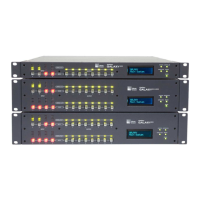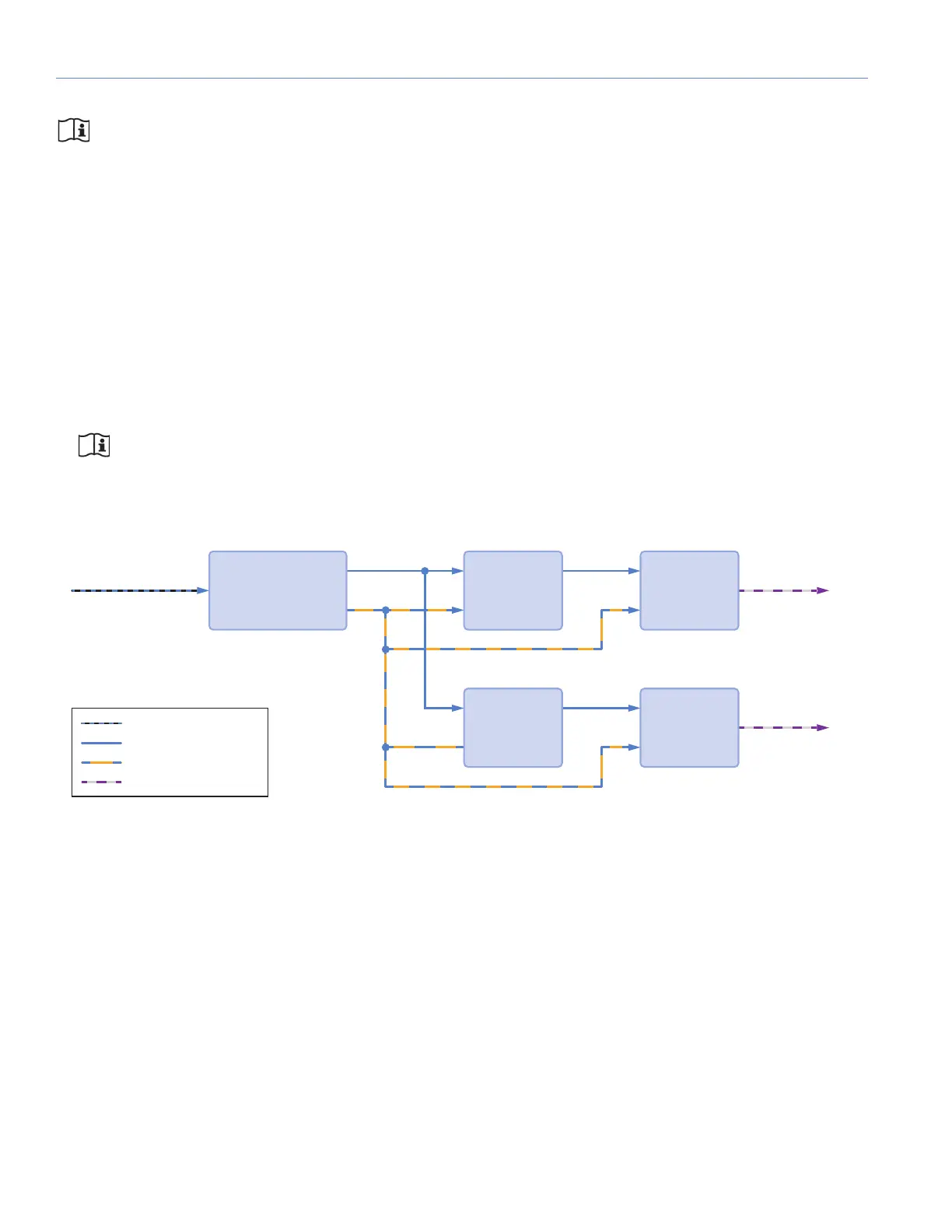APPENDIX B: CLOCKING
60
COMMON MEDIA CLOCK FOR MULTIPLE INTERCONNECTED GALAXY PROCESSORS
When connecting multiple GALAXY processors together, it is imperative that one common media clock be used.
Clocks should never be daisy-chained. Even small timing differences can cause audio degradation that is audible.
Figure 31, Figure 32, and Figure 33 illustrate some of the more common multiple GALAXY processor clocking
configurations for networked GALAXY processors. They do not cover all possible clocking schemes.
For more information about networking schemes in general, see the AVB Networking Guide (PN 05.010.541.01) available at
www.meyersound.com.
Figure 31 illustrates an example where an Analog or Asynchronous AES3 input must be sent through several GALAXY
processors. While an audio signal may be daisy-chained from one GALAXY processor to the next, it is worth repeating that
the clock must never be daisy-chained. In the case illustrated in Figure 31, GALAXY 1 receives an Analog or Asynchronous
AES3 input, and its System Clock should be set to Internal to use the device clock. For an AES3 Asynchronous signal, the
Asynchronous AES3 Sample Rate Converters (ASRC) must be enabled for that input.
Subsequent processors (in this case GALAXY processors 2, 3, 4 and 5) must receive their System Clock from the same
source (GALAXY 1), which can be accomplished by using the CRF clock (Clock Reference Format packets) from GALAXY 1.
NOTE: An AAF Clock may also be sent from GALAXY 1 as a Media Clock, but the CRF clock is preferable as it
is more bandwidth efficient.
Figure 32 illustrates an example where an AES3 signal aligned to a Word Clock must be sent through several GALAXY
processors. Again, the clock cannot be daisy-chained along with the audio signal. In this case, if GALAXY A (which must be
a GALAXY 816-AES3 processor) receives an AES3 input synchronized at its source to a Word Clock, its System Clock
should be set to the Word Clock received from the same source via the BNC connector. In this case, the AES ASRC must
be disabled.
Subsequent processors (GALAXY processors B, C, D and E, which can be any GALAXY processor model) must receive their
System Clock from the same source (GALAXY A). Use the CRF clock (Clock Reference Format packets) from GALAXY A as
the System Clock Mode selection. The AES ASRC for succeeding GALAXY processors (B, C, D, and E) must also be
disabled.
Figure 31: Clocking Scheme for Multiple GALAXY Processors—Analog or AES3 Asynchronous Inputs
Milan AVB Audio
Media Clock (CRF or AAF)
Analog Audio
Analog/AES Audio
GALAXY 1 System Clock:
Internal
*ASRC Enabled
Media Clock
(CRF) from
GALAXY 1
GALAXY 2
System Clock:
GALAXY 1
CRF Clock
Milan AVB
Milan AVB
ANALOG
ANALOG
Milan AVB
Analog/AES3
Asynchronous*
GALAXY 3
System Clock:
GALAXY 1
CRF Clock
GALAXY 4
System Clock:
GALAXY 1
CRF Clock
GALAXY 5
System Clock:
GALAXY 1
CRF Clock

